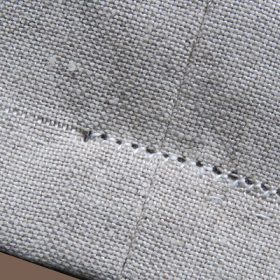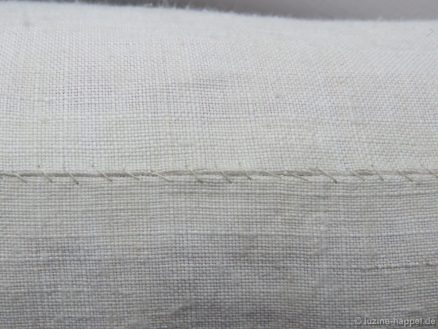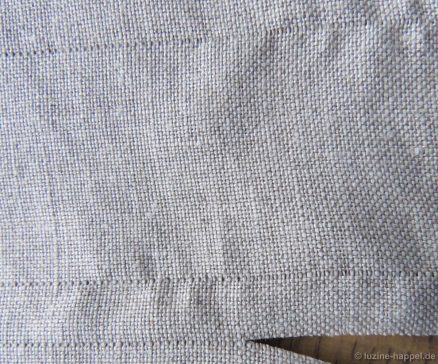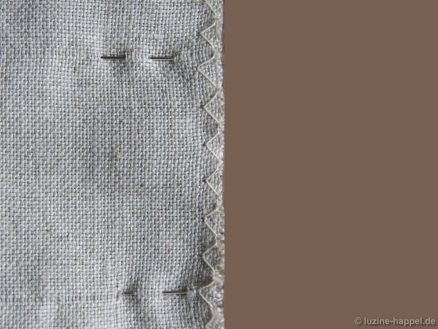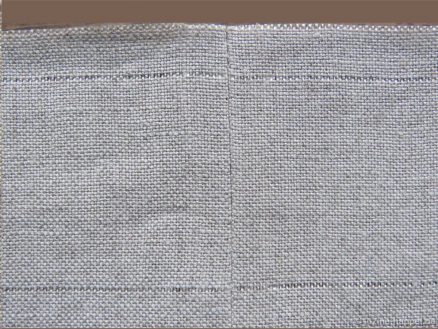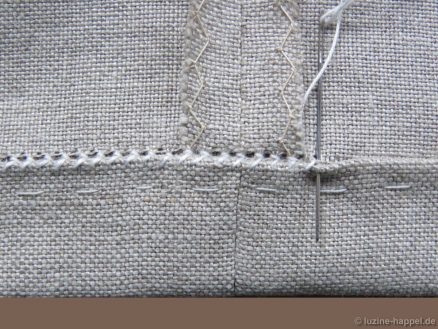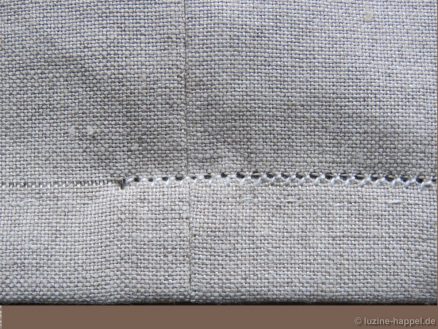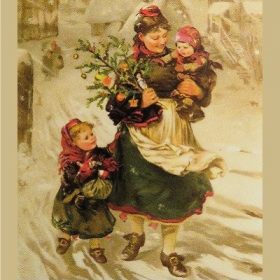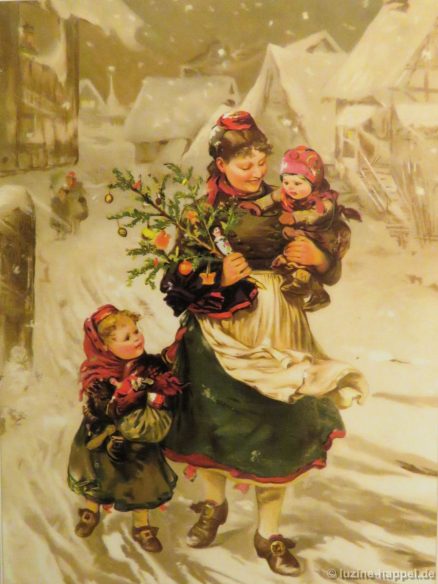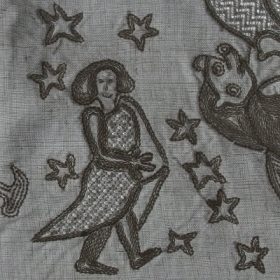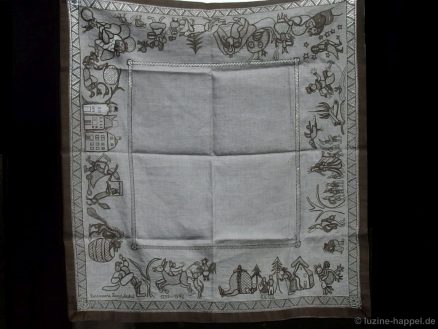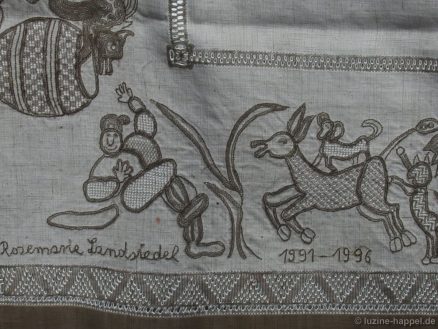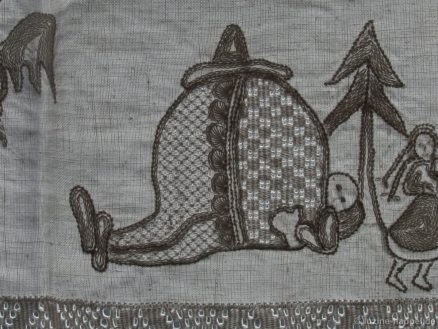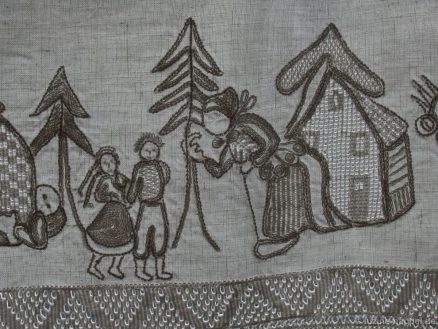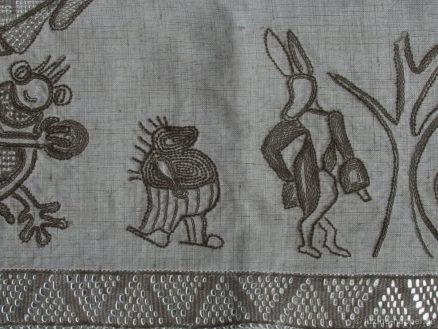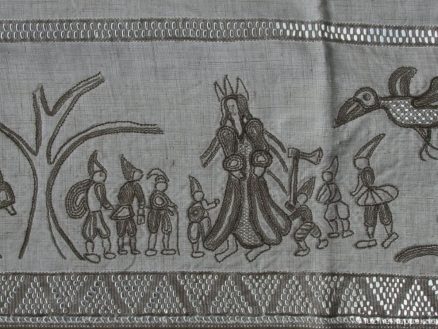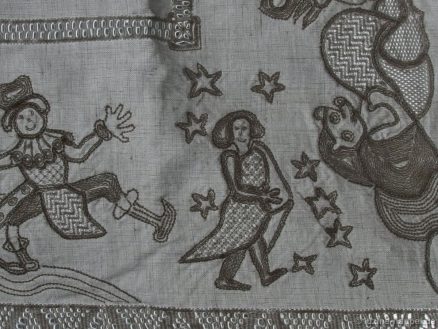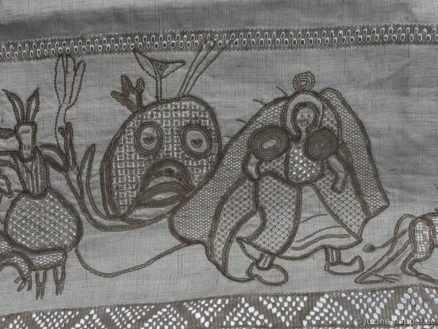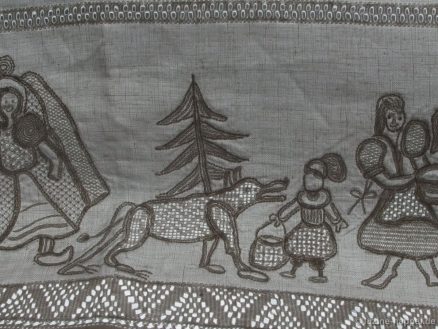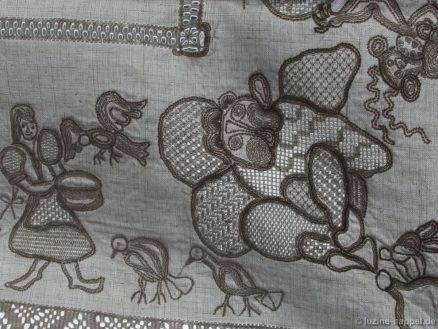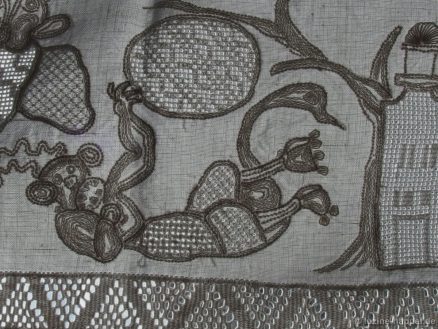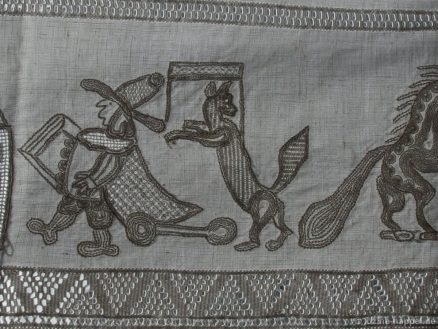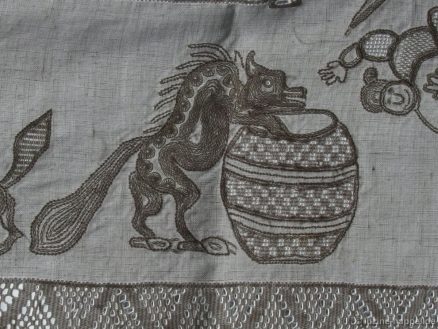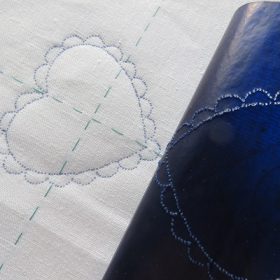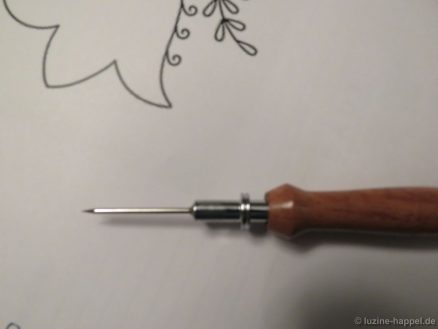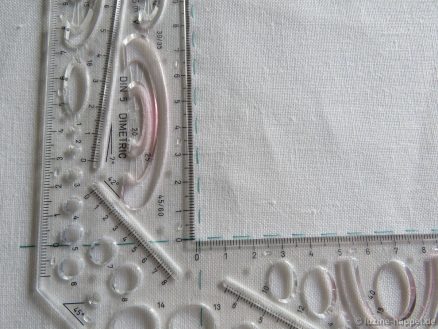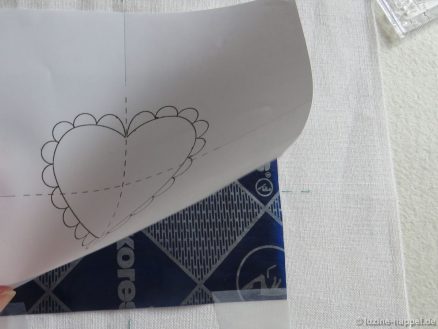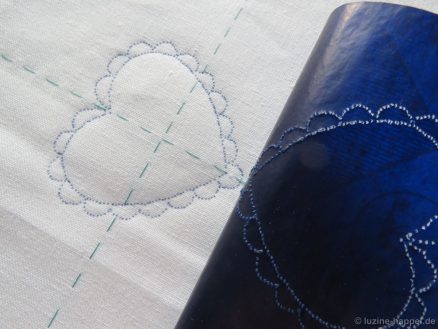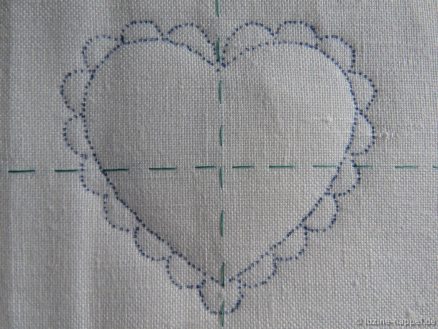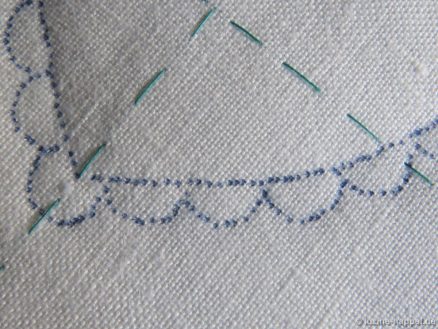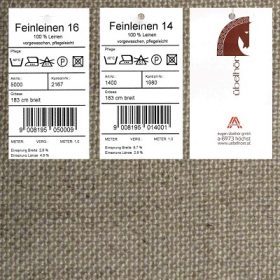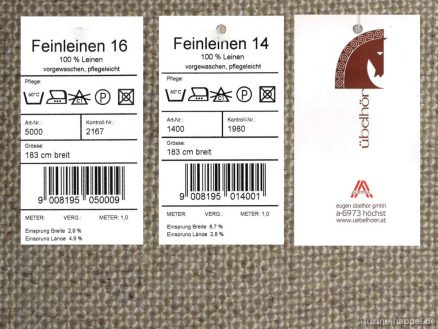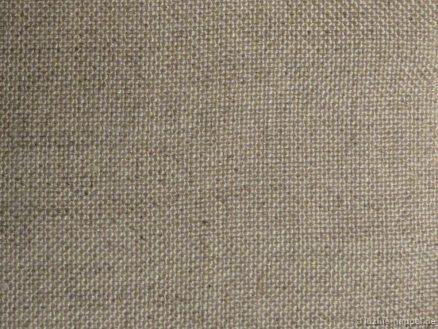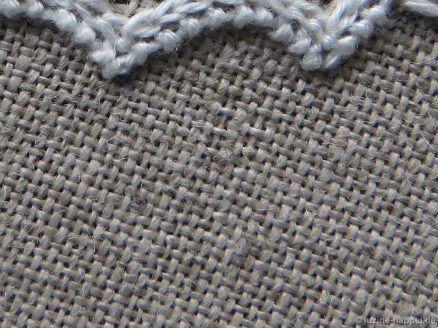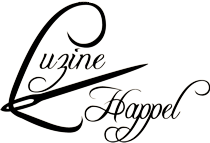Cushions are easiest to obtain when the opening is at the bottom edge and across the entire width.
There are different ways to close these openings. The simplest version is sewing – preferably by whipstitching.
However, this type of closure is only recommended for covers that are rarely striped. Because often repeated unstitching and sewing damages the fabric over time.
In order for the closure edges to be clean and stable, it is advisable to provide them with a narrow hem.
One can proceed as follows:
After completion of the embroidery, the piece is washed to bring the fabric by shrinking to the final expansion. Then the linen is ironed and then cut to the required size.
The pillowcase should have a 2 cm wide hem. It is cut from a piece of linen and folded at the top edge. Before the sides are sewn together, the pillowcase is brought to the required height – here: 2 x (desired finished height + 1 cm fold + 2 cm inside hem width). Then two threads are withdrawn – one 1 cm, the second 5 cm from the lower edge, both on the front and the back.
Before closing the side seams, the withdrawn-thread lines of the front and the back are placed exactly on top of each other and held in place with pins.
One should check on the back whether the pins have also meet the withdrawn-thread lines there.
Also holding against the light facilitates the precise assembly.
Both layers of fabric are carefully basted in the seam area and then sewn together with the machine. After the seam has been applied, the following image appears from the right side of the fabric:
The fold is folded along the withdrawn-thread linel to the inside. Thread line is placed on thread line. The hem is pinned, basted in place and then fastened using Antique hem stitches. In the area of the side seam allowance, one has to check the run of the stitches on the outside with each stitch.
In this way, you get an all around clean hem.
Pillowcases prepared in this way can be closed in different ways. This one, as already mentioned, is to be sewn by hand with overwhelming stitches. Due to the hem, the lower edge remains stable; if the hand stitches are not too fine and not too invisible, the pillowcase can be unstitched, washed and sewn close again without any problems.
